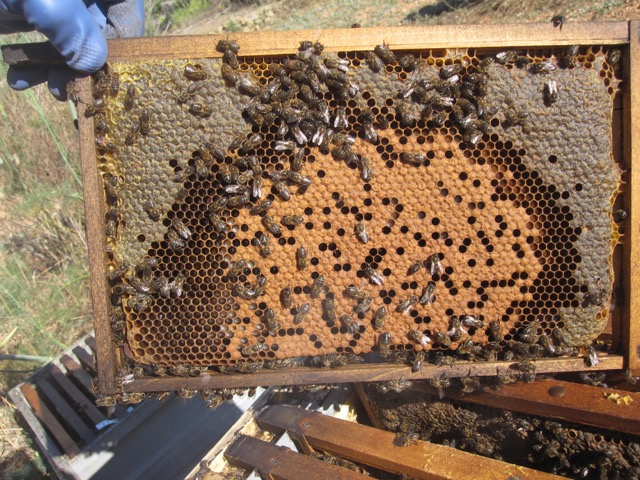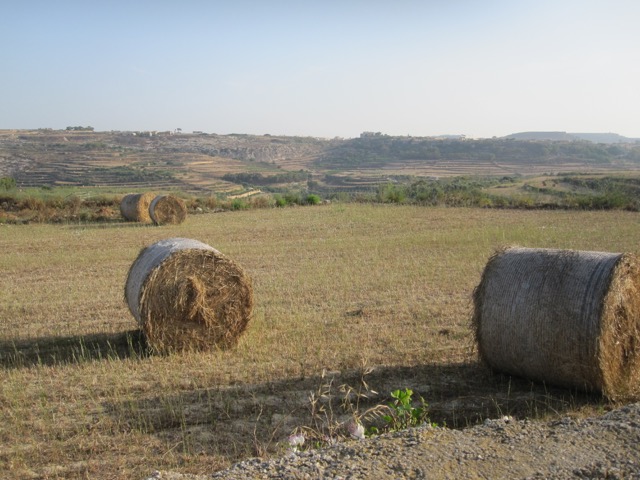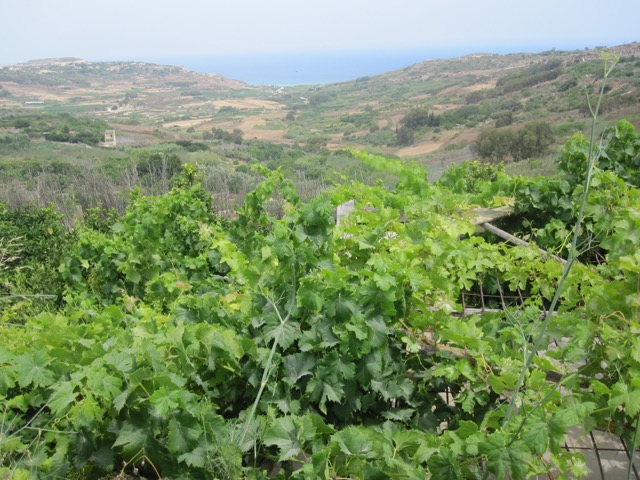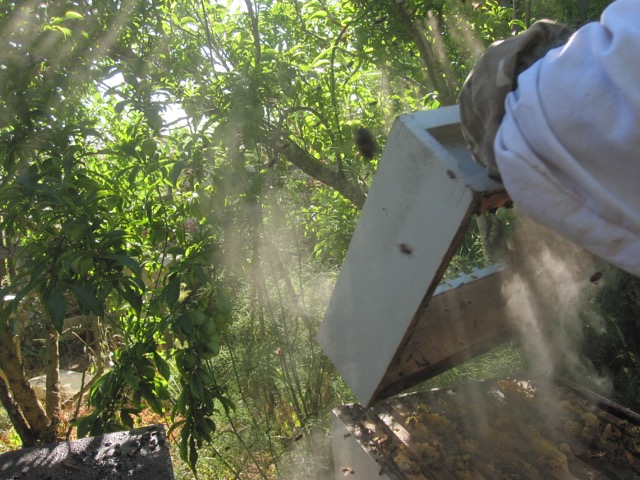I am walking this afternoon under the burning-crisp summer sun. Limestone surrounds me: in rough rock, in hewn rock, in built houses. The vivid blue Mediterranean Sea, extending from the horizon, also peeks out from the nearby bay, which appears yet distant because it is a steep descent to beach level. I am on the island of Gozo, the second largest of the Maltese Islands. Gozo is hillier and more agricultural than its sister island, Malta. There is a rich tradition of beekeeping on these islands, extending to Roman and perhaps pre-Roman times, and this month of June finds me in Gozo to research the contemporary beekeeping tradition and understand the human–bee, flower–hive interactions.
My research is an attempt to understand the problems bees are facing and to find better ways that we can engage with and nurture bees. That the plight of bees is of great concern is undeniable, and it is all over the media: just last month, the UK government approved the use of bee-threatening neonicotinoid pesticides, and this month, the New York Times published a video that explains the importance of bee pollinators. Scientific fixes alone are inadequate, and the social situation and politics around beekeeping are complex. Additionally, the bee itself is dynamic and is continuously being shaped by a variety of forces; as anthropologist Jake Kosek puts it, “The changing relationship between bees and humans brought the modern bee into existence in a way that has made it vulnerable to new threats” (2010: 651).
Gozo is an excellent place to think with bees and to spend time being, or becoming, with them. Bees are dotted all over the islands, and they are said to produce some of the nicest honey in the world. One of the beekeepers I meet, who later teaches me how he extracts honey, says that Gozitan honey is supposed to be the third-best honey in the world, and the Queen of England sourced honey from a man he knew in the same village. Another beekeeper paints a dazzling sketch when he says the Greeks named the islands Melita, or honey. “There must be a reason,” he affirms: a dreamy suggestion of lush flowers and dripping nectar in times bygone—and perhaps in times continuing?
Between the sea and me during this burning-crisp afternoon walk is sun-parched land, speckled with sloping vineyards, walls of limestone, and abrupt clusters of trees. A fellow anthropologist has told me that these abrupt clusters of trees are in fact orchards, which can house boxes and boxes of bees. In this moment, during this walk, I don’t understand how these few trees, which form very thin cover amid the arid stonescape, are spaces of orchard, let alone bee gardens or sanctuaries. Sure, I have seen the bees around the caper flowers and the giant fennel stalks littered by every roadside and wall crevice. Sure, I understand there are high biodiversity and a good mix of flora on this island: part of what makes Gozitan honey special. But I do not understand where the bees live, where their home and queen and winter stores of honey are, when they are not out foraging, darting as they do, nomads of flower to flower.
Later this week, I will get to help harvest honey from two hives, and when we visit these hives, tucked away just beyond the line of sight of these bee gardens, my perspective of the landscape—of how these bees are both born from and give birth to the landscape—will change. Stepping into the oasis of the seemingly abrupt tree cluster, I will be immediately transformed. I will see the Bee in a different way. I will see it at home, in its home, and suddenly, in an embodied way, I will understand how it is at home on this island. As anthropologist Donna Haraway (2008) explains, none of us—not the bees, not the landscape, not the human keepers, not even the me who will be typing these words—exists prior to interacting with other beings; these bees and this land, these trees and the beekeepers, are all interwoven and mutually bring each other into existence.
~*~
What I learned through my period of fieldwork is that it is not just the bees and the landscape, people and flora that mutually become into existence. The raw materials of beekeeping are very much alive as well. The wood, the wire, the carpenter’s workshop; the jars imported from Sicily, the rooftop tar mixed with tree sap to create propolis, and the Big Pharma Bayvarol strips placed inside hives are all very much shaping, creating, becoming with our modern Gozitan bee. Anthropologist Tim Ingold has spoken to the importance of materials, the aliveness of materials (2013). Beekeeping in Gozo exemplifies precisely this in the context of multispecies encounters. Materials easily play as big a role in shaping the emergent Gozitan bee as do the landscape, flora, and human keepers.
And these materials are not just from carpentries and pharmaceuticals; materials can also be genetic. A discussion of the emerging Gozitan bee would be incomplete without mention of subspecies. The honeybee subspecies endemic to the islands was named and classified in a 1997 article as Apis mellifera ruttneri, and many beekeepers are aware of this article. Ruttneri is genetically closer to the North African bee than to the European bee (Sheppard et al. 1997). Gozitan beekeepers are concerned, for slightly varying reasons, about the recent importation of foreign European bees to the island. The most cited reason is the fear that its alien DNA will mix with ruttneri and take ruttneri to extinction. Beekeepers have indicated that interbreeding could change the behavior of their bees, the bees’ level of aggression to threats, and its suitability to the Maltese landscape. Whatever the case may be, the modern Gozitan bee clearly emerges through ruttneri’s entanglement with other bees, just as it is also emergent within the meshwork of flora–human–materials. The bee is a lot more than an insect in a box.
It is this complexity—the bees’ relationship with flora, landscape, human keepers, hives, materials, and other bees—that needs to be taken into account when considering what we can do to be of service to the bee population.
~*~
Two weeks ago, I was taking the train down from Aberdeen to York. I was sitting next to a man who worked as a floor manager on a North Sea oil rig. Naturally, we got around to talking about bees, and he asked me about all this colony collapse stuff: so what is making the bee disappear? Is it all the cell phone radiation?—and while we were on the topic, what did I think about global warming?
I started explaining what I’ve just written: that it’s all a complex system that has been stressed enough so it’s not really about one factor or another.
He heard me out, and said, “Yeah, I understand what you’re saying, but…” He paused before continuing, “But when something malfunctions on an oil rig, Health and Safety ask us to do root cause analysis.” I asked him what root cause analysis was, and he explained by example, with the “five why’s.” His example is something like what follows:
→ If two oncoming trains collide, and you were in charge of doing the inspection, you would first ask, why did they collide?
→ Because they were on the same track.
→ OK, why were they on the same track?
→ Because the drivers received instructions to be on the same track.
→ OK, why did they receive those instructions?
→ Because the schedules were wrong.
→ OK, why were the schedules wrong?
(… and so on.)
What he said, and the simplicity of it, made sense. But I didn’t know how to respond to it, and I don’t know how it is—or if it should be—applicable here. In this all-too-human encounter between different modes of approaching problems, between root cause analysis and sitting with complexity, I find myself caught in an intraspecies tug. And in this encounter, I meet inner confusion. Perhaps it is confusion between the physicist in me and the anthropologist in me, or perhaps it’s the confusion of being caught in translation. What he’s saying—its simplicity—makes perfect sense, and what I’m saying—its complexity—makes sense too, and there is an implied “but” somewhere in there.
I think his point was that, sure, appreciating and sitting with complexity is important, but you need to be able to distil concrete details from it, so concrete action plans can emerge. That is, it’s all dandy for me to write about the bee in a meshwork and the bee as entangled, but the real gem might be when I am able to present simplicity that coexists with the complexity of the situation—in such a way where action can emerge, where academia can be engaged. The real gem, perhaps, is when we can do something with what it is that we have come to know.
I’d like that to be so, and I do not yet know how to do it.
I reread my title to see if I wrote what I’d intended to write, and I thought yes, “meshworks,” “entanglements, “the changing bee.” But even so, I am left wondering, what is this “Bee” that is changing? Do recent anthropological insights in multispecies ethnography let me only show how it is entangled in interspecies encounters, or can I also give it some form of its own, some fluid boundedness that makes it whole? What is the ongoing dance, not just the “subject- and object-shaping dance of encounters” between “species of all kinds, living and not” (Haraway 2008: 4), but also the quieter, inner dance between the complex, interrelated becoming of the Gozitan bee and its perhaps equally valid simplicity and individuality? Perhaps the honeybee, with its interplay of individuality and sociality, is also a good metaphor to think with—to bee with.
Daksha Madhu Rajagopalan is an anthropology graduate student at the University of Aberdeen, whose research is on agriculture, bees, and spiritual dimensions to farming. She has done a month of fieldwork in Gozo, via a field school program. She used to be a physicist in a different (undergraduate) life.
All photos in this post are credited to the author.
References
Haraway, Donna. 2008. When Species Meet. Minneapolis: University of Minnesota Press.
Ingold, Tim. 2013. Making: Anthropology, Archaeology, Art and Architecture. London: Routledge.
Kosek, Jake. 2010. “Ecologies of Empire: On the New Uses of the Honeybee.” Cultural Anthropology 25, no. 4: 650–678, doi: 10.1111/j.1548-1360.2010.01073.x.
Sheppard, Walter S., Maria C. Arias, Arnold Grech, and Marina D. Meixner. 1997. “Apis mellifera ruttneri, a new honey bee subspecies from Malta.” Apidologie 28, no. 5: 287–293, doi: 10.1051/apido:19970505.
Cite as: Rajagopalan, Daksha Madhu. 2015. “Being with Bees, Sitting with Complexity: The Changing Bee in a Meshwork of Entanglements.” EnviroSociety. 19 August. www.envirosociety.org/2015/08/being-with-bees-sitting-with-complexity.




